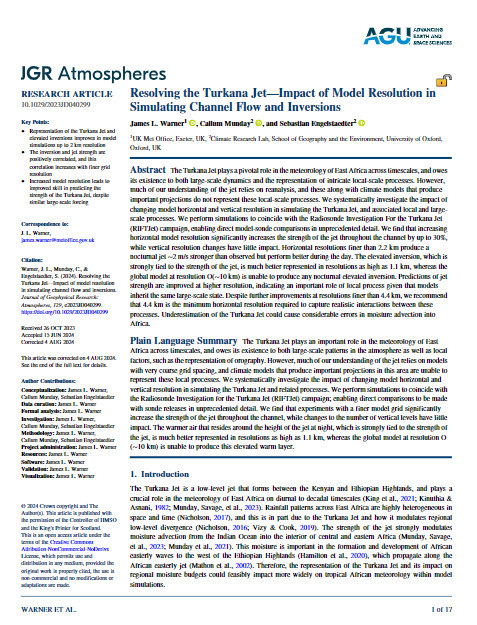James L. Warner, Callum Munday and Sebastian Engelstaedter
The Turkana Jet plays a pivotal role in the meteorology of East Africa across timescales, and owes its existence to both large-scale dynamics and the representation of intricate local-scale processes. However, much of our understanding of the jet relies on reanalysis, and these along with climate models that produce important projections do not represent these local-scale processes. We systematically investigate the impact of changing model horizontal and vertical resolution in simulating the Turkana Jet, and associated local and large-scale processes. We perform simulations to coincide with the Radiosonde Investigation For the Turkana Jet (RIFTJet) campaign, enabling direct model-sonde comparisons in unprecedented detail. We find that increasing horizontal model resolution significantly increases the strength of the jet throughout the channel by up to 30%, while vertical resolution changes have little impact. Horizontal resolutions finer than 2.2 km produce a nocturnal jet ∼2 m/s stronger than observed but perform better during the day. The elevated inversion, which is strongly tied to the strength of the jet, is much better represented in resolutions as high as 1.1 km, whereas the global model at resolution O(∼10 km) is unable to produce any nocturnal elevated inversion. Predictions of jet strength are improved at higher resolution, indicating an important role of local process given that models inherit the same large-scale state. Despite further improvements at resolutions finer than 4.4 km, we recommend that 4.4 km is the minimum horizontal resolution required to capture realistic interactions between these processes. Underestimation of the Turkana Jet could cause considerable errors in moisture advection into Africa.

